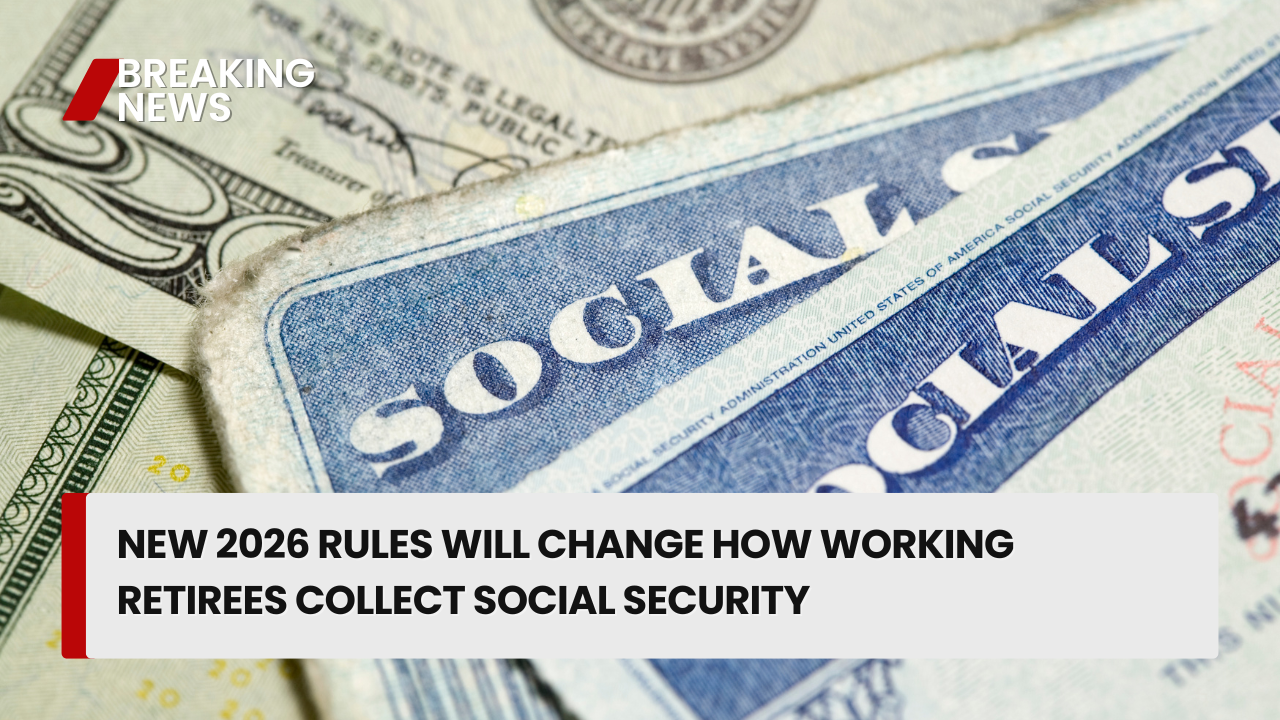For many Americans, retirement no longer means slowing down. In 2025, more older adults than ever are taking part-time jobs, freelancing, or running small side businesses to keep up with rising living costs. With inflation still straining budgets, the Social Security check—averaging about $2,008 per month—often isn’t enough on its own.
But beginning January 2026, working retirees will receive a small but meaningful boost: the Social Security Administration (SSA) is raising the earnings limits that determine how much early filers can earn before part of their benefits is temporarily withheld. It won’t solve every financial challenge, but it may offer a bit more breathing room for those balancing paychecks with retirement income.
How the Social Security Earnings Test Works
If you haven’t yet reached Full Retirement Age (FRA)—between 66 and 67 depending on your birth year—Social Security may withhold part of your monthly benefits if your earnings exceed the annual limit.
Key points:
- Once you reach FRA, you can earn unlimited income with no reduction in benefits.
- Before FRA, the SSA temporarily withholds some benefits if you earn above the limit.
- The withheld amount isn’t lost forever. When you reach FRA, your benefit is recalculated upward to credit the months withheld.
The SSA notes on its Retirement Earnings Test page that the rules are designed to keep benefits actuarially fair—preventing early filers from receiving both full benefits and full wages simultaneously.
What’s Changing in 2026
Every October, the SSA updates its income thresholds along with cost-of-living adjustments. For 2026, the earnings limits are rising again:
| Category | 2025 Limit | 2026 Limit | Reduction Rule |
|---|---|---|---|
| Below Full Retirement Age for all of 2026 | $22,320 | $23,240 | $1 withheld for every $2 earned over the limit |
| Reaching Full Retirement Age during 2026 | $59,520 | $62,180 | $1 withheld for every $3 earned over the limit (applies until the month you reach FRA) |
| At or above Full Retirement Age | No limit | No limit | No reduction |
The added $900–$2,600 of income space may allow retirees to take on extra shifts, seasonal work, or contract projects without triggering an early reduction in monthly payments.
Example: How Withholding Works
Consider Linda, age 64, who plans to earn $30,000 in 2026 while receiving Social Security:
- Earnings limit: $23,240
- Linda earns $6,760 over the limit
- SSA withholds $1 for every $2 over the threshold → $3,380 withheld
Social Security pauses her checks until that amount is recouped. Once she turns 67—her FRA—her monthly benefit is recalculated upward, restoring the withheld value over time.
Why This Matters in 2026
Even as inflation slows overall, retirees continue to feel the high costs of groceries, rent, insurance, and healthcare. With the 2026 COLA expected near 2.5%, many households are relying on part-time work to close financial gaps. The new earnings limits won’t dramatically boost income, but they do allow more flexibility for older workers trying to balance rising expenses and shrinking savings.
Planning Tips for Working While on Social Security
- Estimate Your Income Early
Use the SSA’s calculators to see how earnings may impact your checks. - Report Changes Immediately
Accurate reporting prevents later repayment demands. - Time Your Work Strategically
Once your FRA birthday month arrives, all limits disappear. - Consider Delaying Benefits
Waiting to file can increase your monthly benefit by up to 8% per year until age 70. - Know Your FRA
Most near-retirees born in 1960 or later have an FRA of 67.
Other Financial Factors to Consider
Working while collecting benefits may also affect:
Taxes: Benefits become partially taxable if combined income exceeds $25,000 (individuals) or $32,000 (couples).
Medicare premiums: Higher income can increase Part B and Part D costs.
Future benefits: Continued work can raise your long-term Social Security benefit by replacing lower-earning years in your record.
FAQs
How much can I earn in 2026 without losing benefits?
Up to $23,240 if you’re under FRA all year; $62,180 if you reach FRA in 2026.
Do I lose withheld money permanently?
No. You’re credited back after you reach full retirement age.
Do earnings limits apply after FRA?
No. All limits disappear once you reach it.
Where can I verify updates?
Visit the official Social Security Administration website for calculators and thresholds:



